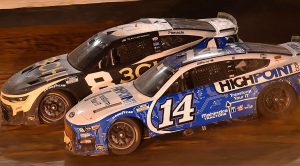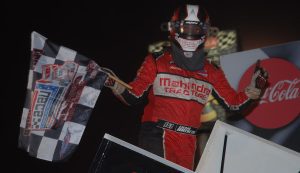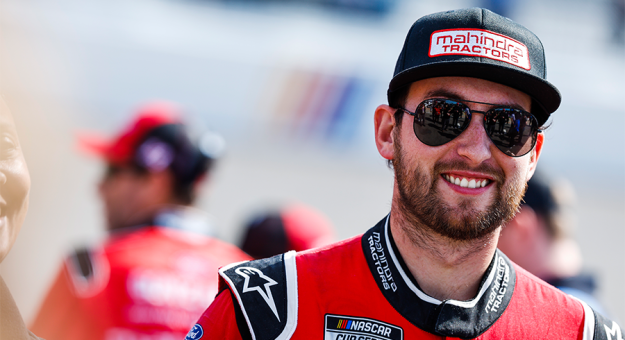For the third consecutive year, more than 2,000 truckloads of dirt have been hauled into Bristol (Tenn.) Motor Speedway to convert the famed .533-mile concrete oval into a dirt track for Sunday’s NASCAR Cup Series Food City Dirt Race.
For some Cup Series regulars, the switch from pavement to dirt is intimidating. Though for Chase Briscoe, who grew up dirt racing in his home state of Indiana, it’s a welcome sign.
Briscoe, aboard the No. 14 Stewart-Haas Racing Ford, nearly won last year’s Easter Sunday event. Though contact with Tyler Reddick in the final corner on the final lap spun both drivers out, allowing Kyle Busch to steal the victory.
Heading into this weekend, Briscoe will get plenty of laps on dirt, running a dirt late model on Thursday at nearby Volunteer Speedway, along with Saturday’s NASCAR Craftsman Truck Series race at Bristol.
While reps are a positive, transferring any potential notes and observations for Sunday’s race is tricky due to the severe differences between the three types of race cars.

“They definitely drive totally differently. A specifically built dirt car like a sprint car or late model – that’s what it’s built to do. It’s going to go around the race track faster than anything else – that’s just what it’s made to do,” Briscoe said. “It does everything faster, it reacts better, has way more grip, lighter – it just does everything way better. The speeds are definitely way higher.
“The Cup car, and the Truck even, drive pretty drastically different. Like the Cup car does things maybe a little bit better than the Truck. The Truck is a little bit lazier. With the independent suspension on the Cup car, it seems like you can kind of be a little more aggressive with it. Definitely, compared to a sprint car or late model, the Cup car and even the Truck feel kind of slow motion.”
To support Briscoe’s comments, Reddick turned the fastest lap in practice for last year’s Cup Series race at Bristol at 20.017 seconds. Two weeks later, on the same race track, Ricky Weiss turned a fast lap of 15.374 seconds in a late model, with Rico Abreu covering a lap in 13.517 seconds in his winged sprint car.
Briscoe admitted that his history racing on dirt can be a negative in many instances, with the approach of driving completely different in a Cup Series car.
“I always say, I feel like having a dirt background can be a disadvantage at these races just because you drive it so differently,” Briscoe said. “The only time I feel like it’s a huge advantage to be a dirt guy is early in the race when the track has a lot of grip, when it’s tacky and more muddy instead of slick and hard.
“That’s when the dirt guys can sort of shine, because we understand the concept of how to get the car into the corner. It’s so opposite for all these non-dirt guys going into the corner – lift way earlier and be wide-open. We just understand how to get the car to turn when it’s like that, and if it’s anything like last year – running on the cushion and up by the wall and just how you have to run the car – I feel like having a dirt background helps in those situations.

“But when it’s slick and slow around the middle and bottom, it’s almost a disadvantage to be a dirt guy, because it’s really just a raw, slick pavement track.”
With weather threatening throughout the weekend, questions loom as to how the rain may impact the track surface on Sunday. Briscoe believes it ultimately comes down to how the dirt was prepped and formed by the speedway, along with the Truck Series racing the night before on Saturday.
“If they have it opened up so the rain’s going to go down deep versus really hard packed, where the water is kind of just running off the top of it, that will change what we have,” Briscoe said.
“The Truck race will definitely change what we have. There are just a lot of variables. Without seeing the race track, seeing how they have it tilled up and even on Sunday, if we get rain two or three days in a row — if they have it hard packed, as soon as they blow that top layer off, it’s just going to be dry underneath it.
“It all comes down to the water truck, the grader and things like that.”
While many questions won’t be answered until the green flag waves on Sunday night, the 28-year-old is optimistic the track will be similar to what was seen in last year’s Bristol Dirt Race.
“Racing at night is going to help. Anytime you race at night, it’s better than racing during the day on dirt,” Briscoe said. “Hopefully we can have a track similar to what we had last year.”
